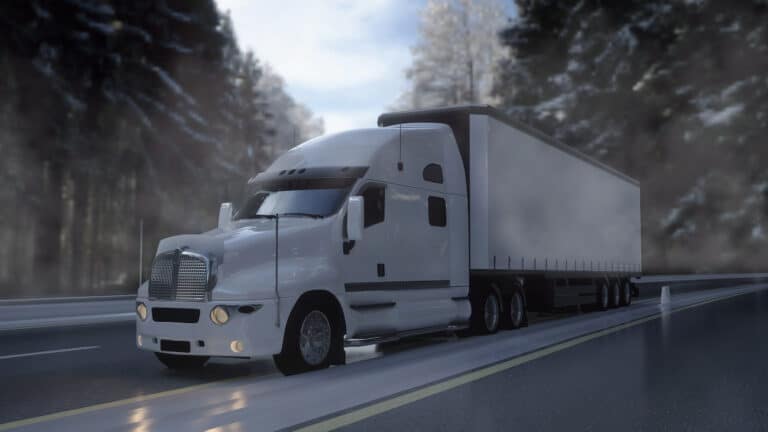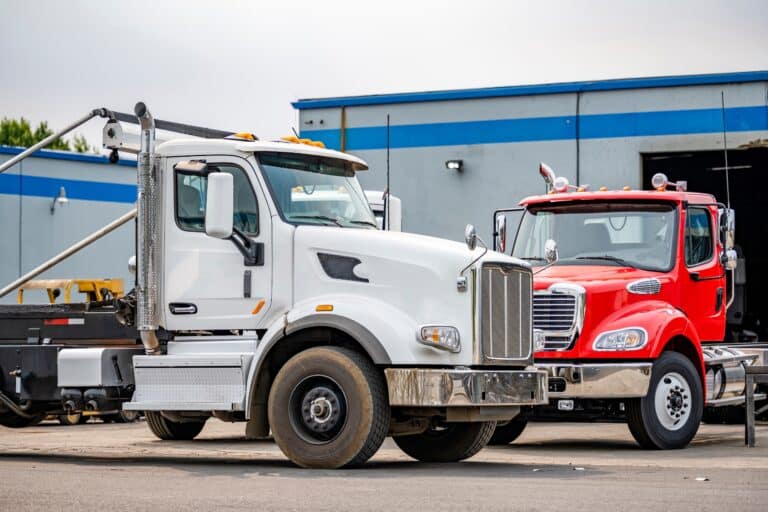You’ve got enough on your mind when you’re rolling down the highway. The last thing you need is the headache of complicated logging systems or the stress of a Transport Canada inspection. Whether you’re a seasoned pro or new to the industry, understanding truck driver logs can make the difference between a smooth run and costly delays.
Why Driver Logs Matter More Than Ever
Today’s electronic logs do more than just track your hours – they help you maximize your driving time and keep more money in your pocket. For example, when you’re approaching your driving limit, your ELD can alert you well before you risk a violation. This means no more mental math or rushing to find a safe place to park when you’re running low on hours.
Here’s what modern driver logs mean for your bottom line:
- Save time on paperwork
- Avoid costly violations (which can run $2,000 or more under Canadian regulations)
- Get paid faster with accurate records
- Reduce fuel costs by tracking idle time
- Prove delivery times and delays without argument
Do you have any questions? Talk to ELD Advisor: 650-405-3372 or Request Callback
The Basics Every Driver Needs to Know
Your truck driver log is more than just a requirement – it’s your record of work and your protection on the road. Since Canada’s ELD mandate took full effect in January 2023, electronic logs have become your digital partner in compliance.
What Your Logs Must Show
Every log, whether electronic or paper, needs to track:
- Your driving time
- On-duty time
- Off-duty periods
- Location changes
- Vehicle information
- Carrier information
The transition to certified ELDs in Canada brought some important changes. While the adjustment period had its challenges, electronic logs have some clear advantages:
- Automatic recording of drive time
- Built-in alerts before violations
- Quick access during inspections
- No more arguing about missing paper logs
- Protection against coercion to violate HOS rules
Understanding the Financial Impact
The cost implications of log violations in Canada are significant. A single violation can result in:
- Fines up to $2,000 per HOS violation (varies by province)
- Negative Carrier Profile/Safety Rating impacts
- Operational delays during inspections
- Potential out-of-service orders
- Insurance rate increases
- Demerit points in applicable provinces
Plus, proper truck driver logs protect you when shippers try to dispute detention time or question your availability. Your ELD becomes your backup, showing exactly when you arrived and how long you waited.
ELD Compliance: Making Roadside Inspections Easier

Having your documentation well-organized can help turn a stressful inspection into a routine stop. Understanding what to expect and being prepared helps make the process go smoothly for everyone involved.
What to Expect During an Inspection
A typical roadside inspection follows a standard process. The enforcement officer will begin by requesting:
- Your Commercial Driver’s License (CDL)
- Vehicle registration and insurance
- Daily Vehicle Inspection Report (DVIR)
- CVOR certificate (in Ontario) or equivalent provincial operating authority
- International Registration Plan (IRP) if applicable
- Your certified ELD information or exemption documentation
During the log review, the officer will examine your current day’s log and the previous 14 days of records. They may ask you to:
- Show your certified ELD’s display screen
- Navigate between daily logs
- Transfer data electronically using the approved Canadian transfer methods
- Demonstrate the ELD’s Transport Canada certification
The officer may also review supporting documents such as:
- Bills of lading or freight documents (in both official languages if crossing provincial borders)
- Recent fuel receipts
- Toll receipts
- Bridge crossing receipts
- Any documents that support your log entries
- Proof of ELD certification and training
Preparing for Inspections
Being ready with these items can save valuable time:
- Your ELD display (tablet or phone)
- 14 days of logs
- ELD user manual and instruction sheet in both English and French
- Blank paper logs (bilingual if operating interprovincially)
- DVIR records
- Your permit book
- Transport Canada ELD certification documentation
- Local provincial permits as required
Many ELD systems offer a special “Inspection Mode” that displays all required information in the format Canadian enforcement officers expect. Taking a few minutes to familiarize yourself with this feature before an inspection can be very helpful.
A few simple practices can help prevent delays during inspections:
- Review logs regularly, especially before crossing provincial borders
- Address any missing information when it’s fresh in mind
- Ensure your ELD maintains proper connection
- Familiarize yourself with Canadian log transfer procedures
- Test your display visibility in different lighting conditions
- Keep all documentation organized and readily accessible
Dealing with ELD Malfunctions
Technology isn’t perfect – even the best ELDs can have issues. Knowing what to do when problems arise keeps you legal and moving.
Common ELD Problems and Solutions
Before calling support, try these solutions:
- Connection Issues
- Check your Bluetooth connection
- Ensure the device is properly plugged into the ECM port
- Restart your tablet or phone
- Look for loose cables
- Data Recording Gaps
- Note the time the problem started
- Switch to paper logs immediately
- Contact your carrier or ELD provider
- Document all troubleshooting steps
- System Errors
- Take a screenshot of any error messages
- Record the time and location
- Try powering down completely
- Follow your company’s backup procedures

Understanding Malfunction Requirements
Under Canadian regulations, you have a 14-day window to address ELD malfunctions, which is more generous than the U.S. 8-day requirement. Here’s how to handle this period effectively:
On the first day:
- Document the malfunction in detail
- Report the situation to your carrier
- Note the ELD provider’s contact information
- Begin paper logs immediately
During the next 13 days:
- Maintain accurate paper logs in both official languages if crossing provincial borders
- Work with your carrier on resolution
- Keep all repair documentation
- Complete any repairs or replacement within the 14-day window
Proper Documentation Steps
Creating a clear record of any ELD situation protects both you and your carrier under Canadian regulations. Within the first 24 hours:
- Inform your carrier about the situation
- Document the certified ELD’s malfunction details
- Record the Transport Canada certification number
- Begin maintaining paper logs in required language(s)
Keep detailed records of:
- All troubleshooting attempts
- Communications with ELD provider
- Carrier instructions received
- Repair/replacement progress
Maintain all records related to the situation for at least 6 months (or longer if required by your province), as they may be needed for compliance verification.
Paper Log Backup Plan
Even with certified electronic logs, keep these paper log essentials in your truck:
- At least 14 blank log sheets (bilingual if operating interprovincially)
- Working pens (black or blue ink only)
- Ruler for drawing time lines
- Past 14 days of logs (print or paper)
- ELD malfunction documentation forms
- Provincial-specific log requirements documentation
Store these items in a water-resistant folder or envelope, clearly labeled in required languages.
How to Fill Out a Paper Logbook
Even in the digital age, knowing how to fill out a paper log correctly is essential. Whether your ELD malfunctions or you’re operating under an exemption, these skills can keep you compliant and moving.
When Paper Logs Are Still Legal in Canada
Transport Canada recognizes several situations where paper logs remain appropriate, including:
- During ELD malfunctions (up to 14 days)
- Vehicles operated under specific permits
- Vehicles manufactured before model year 2000
- Short-term rental vehicles (less than 30 days)
- Operations within specified radius from home terminal (160 km)
Step-by-Step Paper Log Guide
Follow these steps to complete your paper log according to Canadian regulations:
- Header Information (Bilingual if Required)
- Full name and truck number
- Carrier name and principal place of business
- Trip start date and location
- All trailer numbers
- Shipping document numbers
- Cycle being followed (Cycle 1 or 2)
- Home terminal address
- Grid Completion
- Draw continuous lines (no gaps)
- Use straight edges for clean lines
- Mark all location changes
- Note all duty status changes
- Include total hours by category
- Record mandatory off-duty time
- Note border crossings
- Daily Recap
- Calculate all hours by duty status
- Verify compliance with chosen cycle
- Sign and date each page
- Note any deferrals of off-duty time
- Record any adverse driving conditions
- Include remarks in required languages
Common Paper Log Mistakes That Trigger Violations
Avoid these frequent errors:
- Missing total kilometers driven
- Forgetting to list all provinces/territories crossed
- Incomplete city/province information
- Not noting fuel stops and border crossings
- Incorrect duty status changes
- Missing shipping documents
- Missing mandatory off-duty time documentation
- Illegible handwriting
- Missing bilingual information where required
- Incorrect cycle information
- Not noting personal use of vehicle
- Missing required declarations

Light and Medium-Duty Trucks: OBD-II Systems
For light and medium-duty truck drivers, ELD compliance can come with unique challenges, especially regarding OBD-II system compatibility. Understanding your vehicle’s OBD-II system helps you choose the right electronic logbook and avoid compatibility issues.
OBD-II systems are found in many lighter trucks, including:
- Most trucks under 26,000 lbs
- Delivery vans and box trucks
- Ford F-Series (F-150 to F-550)
- Ram and Chevrolet/GMC trucks
- Later model Sprinter vans
Common OBD-II Challenges
Light and medium-duty drivers often face these issues:
- Connection problems. Different port locations, variable communication protocols, and occasional data transmission disruptions.
- ELD compatibility.
- Not all ELDs work with all OBD-II ports
- Some vehicles need special adapters
- Certain protocols may not support all features
- Software updates can affect connectivity
Finding the Right Solution
Use the following steps to ensure ELD compatibility with your truck:
- Check your port. Locate the diagnostic port, identify the protocol (often printed near the port), note the model year and engine type, and document any existing adapters.
- Verify compatibility. Consult ELD providers regarding compatibility for your specific vehicle. Request written confirmation of compatibility and, if possible, test the device before purchase. Obtain technical support contacts for future assistance.
- Maintain a reliable connection. Secure any loose ports, protect them from damage, clean connection points regularly, and check for signs of corrosion.
Success Tips for Light-Duty Operations
To improve ELD performance in light and medium-duty trucks:
- Use high-quality OBD-II cables
- Consider a dedicated tablet for the ELD app
- Keep connection points clean and clear of dust
- Document any quirks specific to your vehicle and communicate them with support

HOS247 Electronic Logbooks: Making Compliance Simple
Your electronic logbook should make your day smoother, not harder. That’s why HOS247 built their system around what drivers actually need on the road. Here’s why drivers and fleet owners choose HOS247:
- User-friendly design. Simple interface that’s easy to learn and even easier to use daily. Works on both Android and iOS devices you already own.
- No hidden costs. Choose monthly or yearly plans that fit your operation – no contracts to lock you in. Plus, a full one-year hardware warranty keeps you protected.
- Smart features that matter:
- Automatic driving status updates
- Clear violation alerts before they happen
- Quick Transport Canada inspection mode
- Fast DVIR reporting and maintenance communication
- Reliable Bluetooth connection that stays stable
- Top-rated support. Get help when you need it in English, Spanish, Russian, or Polish. Real people who understand trucking, not just technology.
- Built for any operation. Works seamlessly with both heavy-duty trucks and light-duty vehicles. Easy installation and clear instructions get you up and running fast.
- IFTA reporting. Automatic fuel tax calculations save you hours of paperwork each quarter.
HOS247 delivers what drivers actually need: reliable hardware, straightforward pricing, and support that’s there when you need it. No contracts means you stay because you want to, not because you have to.
Maximizing Efficiency with Smart Logging Practices
Your electronic logbook can do more than keep you legal – it can help you run smarter and more profitably. Here’s how to make the most of your logging system.
Use your ELD to optimize your day:
- Planning Your Runs
- Check available hours before accepting loads
- Plan breaks during loading/unloading
- Use violation alerts for better scheduling
- Track frequent delay locations
- Managing Delays
- Document detention time accurately
- Record shipper/receiver delays
- Track loading/unloading patterns
- Build evidence for detention pay
- Improving Drive Time
- Monitor real-time hours
- Plan routes around remaining time
- Schedule breaks efficiently
- Avoid rushed decisions
Using Log Data to Your Advantage
Your truck driver logs tell important stories:
- Pattern Recognition
- Identify best-paying routes
- Spot time-wasting customers
- Track profitable lanes
- Monitor fuel efficiency
- Documentation Support
- Back up detention claims
- Verify delivery times
- Support HOS compliance
- Defend against violations
- Performance Improvement
- Track idle time
- Monitor driving patterns
- Identify training needs
- Document safety records
Making Technology Work For You
Get the most from electronic logs for truckers:
- Keep your device charged
- Update apps when prompted
- Back up data regularly
- Learn all available features
- Use built-in planning tools

The Future of Truck Driver Technology
The trucking industry is changing faster than ever. While ELDs were a big change, they’re just the beginning. Let’s look at what’s on the horizon and how it might affect your career behind the wheel.
Self-driving technology is getting a lot of attention, but don’t worry about robots taking your job just yet. The real changes will likely be in how these systems help you drive safer and smarter. Think of it like having a highly trained co-driver who:
- Watches your blind spots constantly
- Helps maintain safe following distance
- Takes some of the strain during long highway stretches
- Assists with backing maneuvers in tight spots
Advanced safety systems are becoming more sophisticated. New tech includes:
- Fatigue detection systems that notice eye movement and head position
- Smart cameras that predict hazards before they become problems
- Lane departure warnings that work better in bad weather
- Predictive maintenance that catches issues before breakdowns
Future logging systems will talk directly to:
- Load boards that match your available hours and preferred routes
- Real-time weather and traffic systems
- Automated routing that considers your remaining drive time
- Dock scheduling systems to reduce wait times
- Smart parking networks that reserve spots along your route
Artificial Intelligence in Trucking
AI isn’t about replacing drivers – it’s about making your job easier. New systems will:
- Learn your preferred routes and stops
- Predict loading/unloading times at specific customers
- Suggest fuel stops based on best prices and your hours
- Help optimize your earnings by finding better loads
- Handle most paperwork automatically
Stay ahead of the curve by:
- Keeping your tech skills sharp with reliable systems like HOS247
- Learning about new features as they roll out
- Understanding how automated systems can help, not replace you
- Staying informed about changing regulations
The key is to embrace helpful technology while maintaining your professional judgment and skills. The future of trucking needs both smart tech and smart drivers.

Conclusion
Electronic truck driver logs have gone from a government mandate into an essential business tool. The key to success isn’t just complying with regulations – it’s using your logging system to make better decisions and run more efficiently.
Remember that your electronic logbook is more than a digital timecard. It’s a tool for managing your business, protecting your rights, and maximizing your productivity. When used properly, it helps you avoid violations, document delays, and maintain accurate records of your work time.
Stay prepared by keeping your technical knowledge current while maintaining your paper log skills as a backup. Watch industry trends and be ready to adapt as new requirements emerge. Most importantly, choose reliable technology partners who understand trucking and provide the support you need when you need it.
The future of trucking is increasingly digital, but the fundamentals haven’t changed. Safe driving, professional log keeping, and smart business practices still form the foundation of success in this industry. By embracing the tools that make these tasks easier, you position yourself for success in today’s trucking environment and whatever comes next.

I’ve co-founded, built and managed several transportation-related businesses. Now, I’m a founder and CEO of HOS247 – an AI Transportation Platform for trucking companies, freight brokers and other logistics operations. We are transitioning old-style operations to technology-advanced logistics entities and help them to grow their businesses. ELDs (electronic logging devices), fleet tracking and management 2.0 combined with AI-powered dispatch tools.












HOS247 HOS247 Rating HOS247 HOS247 Rating HOS247 is a top ELD provider in the trucking industry. We offer a heavy vehicle log book app for transportation professionals that takes care of compliance and optimizes fleet operations. Our customers

Truckers have a lot to consider when choosing an electronic logbook for their business. They need to be mindful of compliance, price, the user-friendliness of each logbook app, and more. Considering the high turnover rate among drivers, it is vital

Choosing the Best Vehicle Driver Log Book Solution in Canada As a trucker, navigating the complex world of electronic logging devices (ELDs) and Transport Canada’s ELD mandate can be a daunting task. From learning the technical aspects of ELDs to